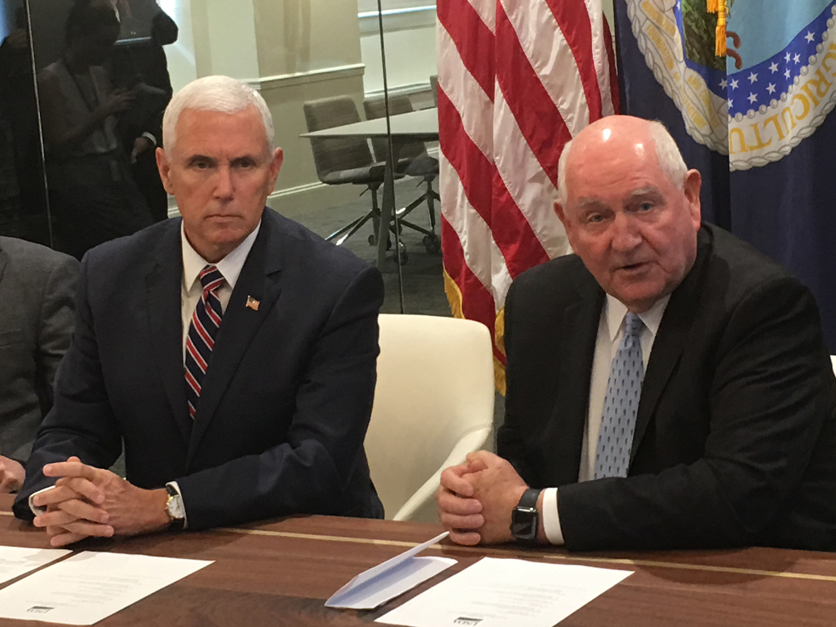USDA and state agriculture officials say Hurricane Michael caused billions of dollars in damage to crops, livestock and aquaculture after slamming into the Florida Panhandle Wednesday with 155 mile-per-hour winds and then plowing a path of destruction through Alabama and Georgia.
"The fall tomato crop in that part of the state was only half in,” said Florida Agriculture Commissioner Adam Putnam. “We’re looking at the remaining half being a total loss.”
Putnam, Georgia Agriculture Commissioner Gary Black, U.S. Agriculture Secretary Sonny Perdue and a team of USDA officials briefed Vice President Mike Pence at USDA headquarters on the damage Thursday afternoon. Putnam and Black dialed in remotely to the meeting.
Cotton, peanuts, pecans, poultry, peppers, tomatoes, squash and dairy producers were some of the hardest hit by Michael’s wind and rain.
Georgia is the largest pecan-producing state in the country and farmers will be reeling for years from the damage. Black told an account of a farmer with 1,200 acres of trees. Half of those trees were knocked down and the other half were completely stripped of their nuts.
“Those types of damages to pecan orchards – they’re not just an annual loss,” said Georgia Farm Bureau spokesman Jeffrey Harvey, who was not part of the briefing. “We’ve been growing them for many years and those trees are out of production forever.”
Perdue, a former governor of Georgia, said it will take farmers who replant their trees 10 years to begin harvesting again.
In Georgia only about 5 percent of the state’s pecans,15 percent of the cotton, 30 percent of fall vegetables and 50 percent of peanuts had been harvested when the storm hit, according to Black. All of the unharvested fields were extremely vulnerable to the storm, which came ashore as a Category 4 hurricane.
It’s still too early for overall damage estimates, USDA Chief Economist Rob Johansson told Pence, but it’s clear the damage is extensive, especially for cotton. Cotton farmers in the Carolinas lost about 10 percent of their crop after Hurricane Florence hit and the damage is expected to be much worse from Michael, he said.
One source tells Agri-Pulse that Georgia, the second-largest cotton producing state, could lose up to 70 percent of its crop.
"For me the cotton crop is as bad as it gets,” said Clay Pirkle, a Georgia cotton farmer and state representative. “I was picking three-bale cotton yesterday," he said, referring to a yield estimate. "Today it is gone. Can't tell the difference between what I've picked and what I haven't."
Georgia is also a major vegetable-producing state with about $1.1 billion worth of production annually and the state's farmers were in the middle of the fall harvest when Michael struck.
“Much of the squash, cucumbers, peppers and tomatoes are being harvested or were just about to be harvested,” Charles Hall, executive director of the Georgia Fruit and Vegetable Growers Association, told Agri-Pulse.
Poultry got slammed too. A spokesman for the Georgia Department of Agriculture said at least 85 poultry houses were destroyed.
For more news, go to: www.Agri-Pulse.com


